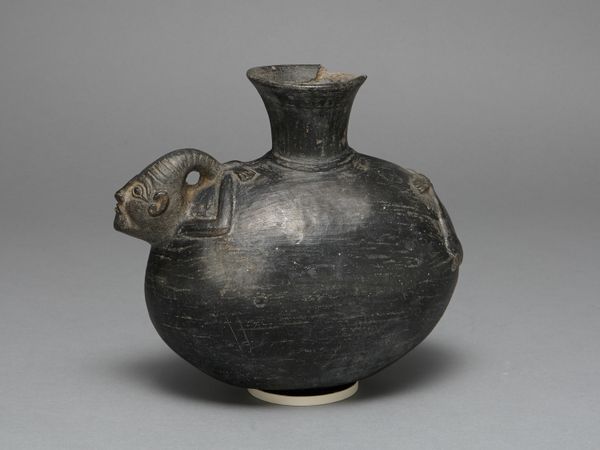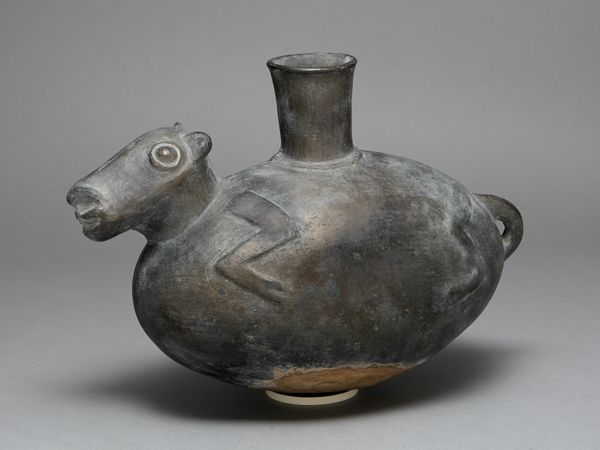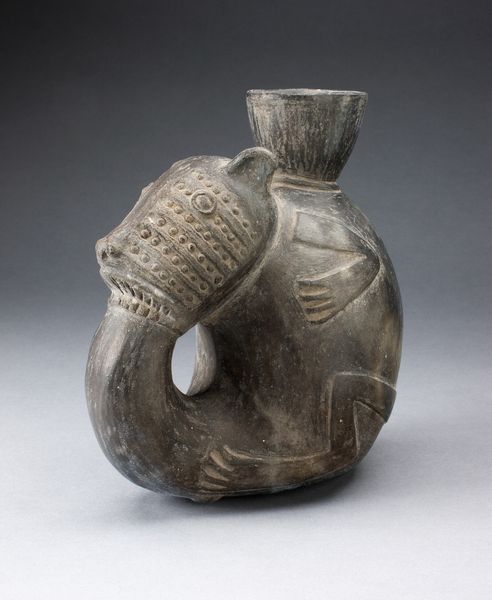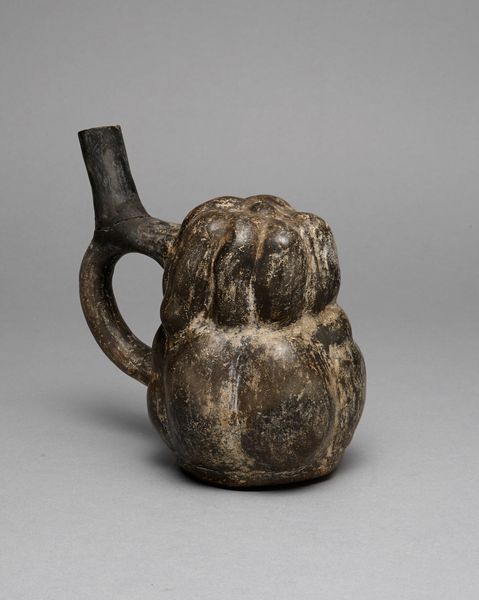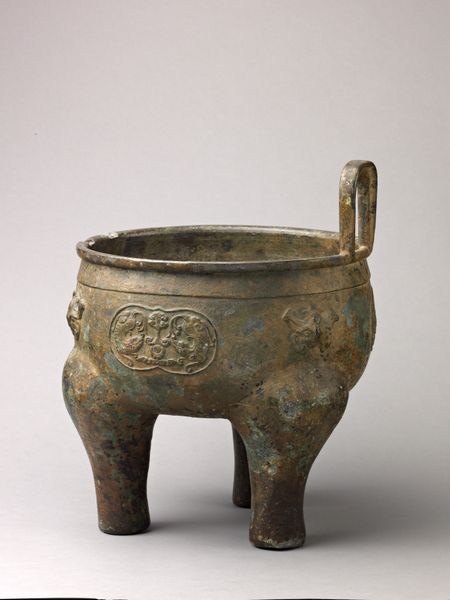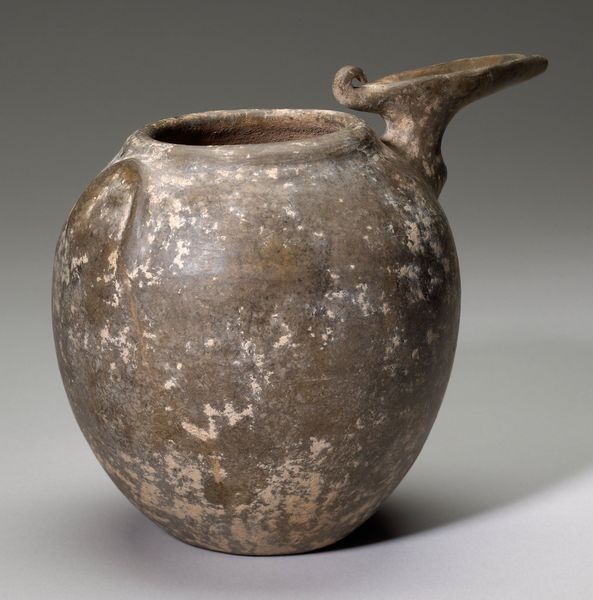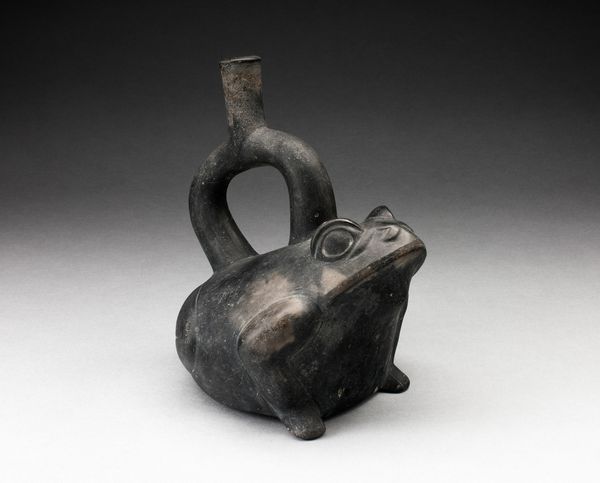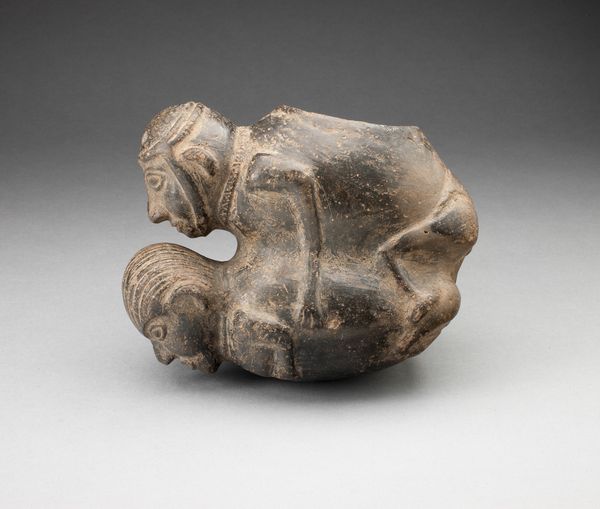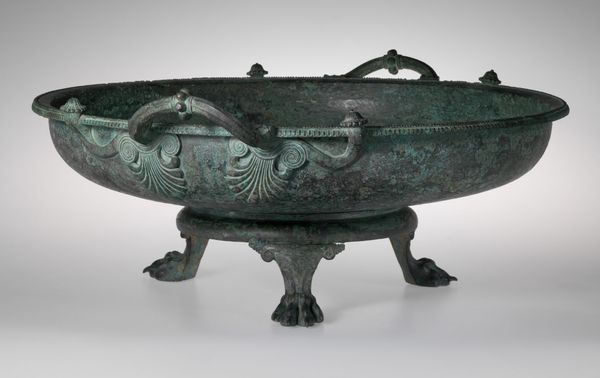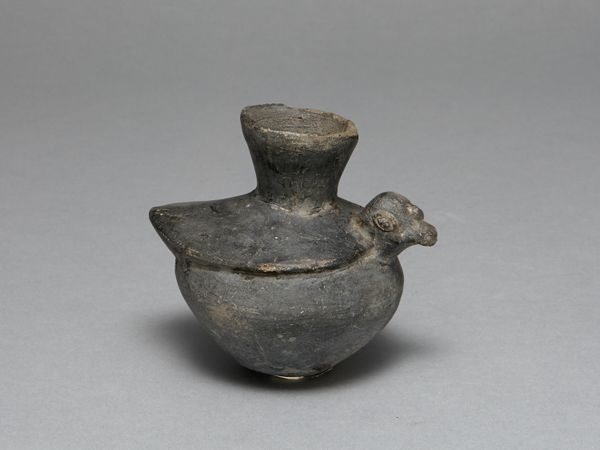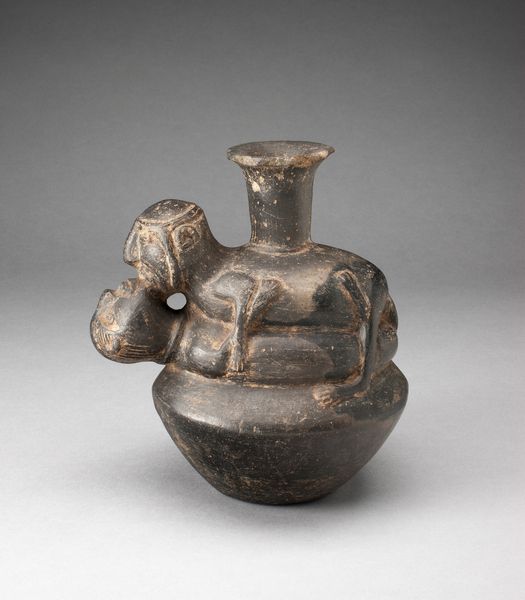
ceramic, sculpture
#
ceramic
#
sculpture
#
decorative-art
#
rococo
Dimensions: 4 × 8 1/4 in. (10.2 × 21 cm)
Copyright: Public Domain
Curator: Looking at this, the first thing that comes to mind is an abstracted landscape, almost geological. Editor: This charming ceramic piece, a sauceboat, was likely crafted sometime between 1745 and 1775. The type is attributed to Whieldon, and it currently resides at the Metropolitan Museum of Art. Curator: It’s an excellent example of the Rococo style applied to decorative arts. The swirling colors, the delicate, almost frivolous shape...it speaks of a desire for beauty and novelty. The feet resemble paws; and is that a dragon or a dog forming the handle? Editor: Indeed. Bestial imagery was exceedingly popular, laden with layered meanings. A dragon is a potent symbol of power, guarding what is precious. Yet, here, rendered on a sauceboat, it's domesticated, playfully incorporated into daily life. One could say it reflects a desire to civilize even the most ferocious parts of nature and oneself. The very shape hints at abundance. The form seems ripe, generous, and brimming with possibility. Curator: And, beyond individual symbolism, we see how these objects shape social rituals. Serving and sharing sauce becomes an aesthetic act. It elevates dining, reinforcing social hierarchies of refined culture and wealth, but also creating a shared sensory experience among the diner’s circle. Editor: Exactly. These Rococo flourishes – the swirls, the beast-like handle – broadcast status, refinement, and cultural capital. This sauceboat becomes a stage, with the culinary act as a theatrical moment of symbolic significance. The ceramic material itself carries meaning, reflecting England's growing interest in ceramics, seeking to imitate porcelain, asserting national artistry within global trade routes. The object then reveals an entwining of local aspiration and worldwide ambition. Curator: Ultimately, viewing an object such as this provides more than an aesthetic understanding, it provides a lens to observe the construction of meaning and power. Editor: It offers us both an object of daily use and an object that hints at narratives far larger than its humble utilitarian nature might first suggest.
Comments
No comments
Be the first to comment and join the conversation on the ultimate creative platform.
